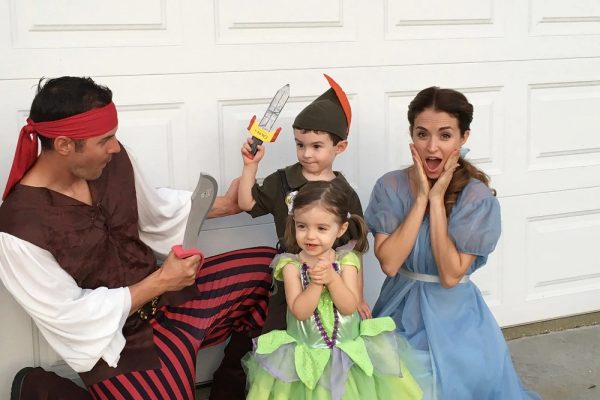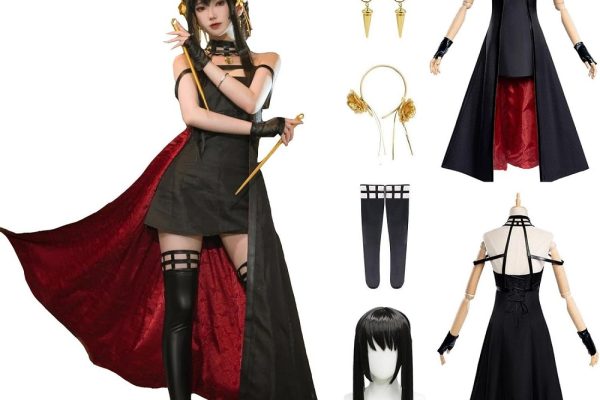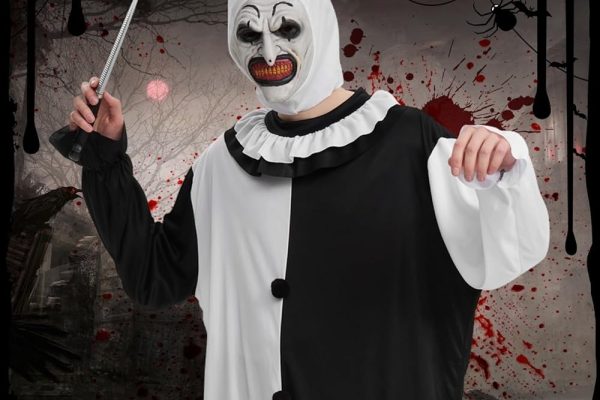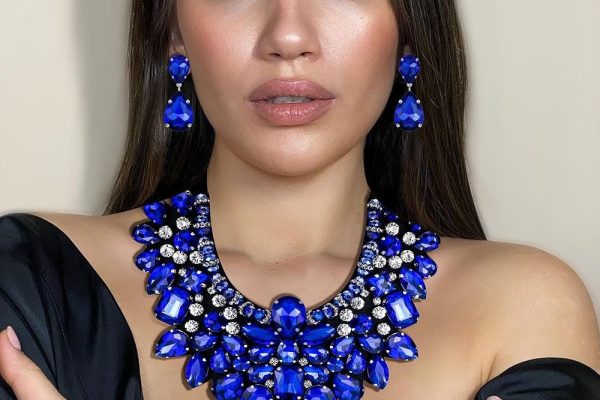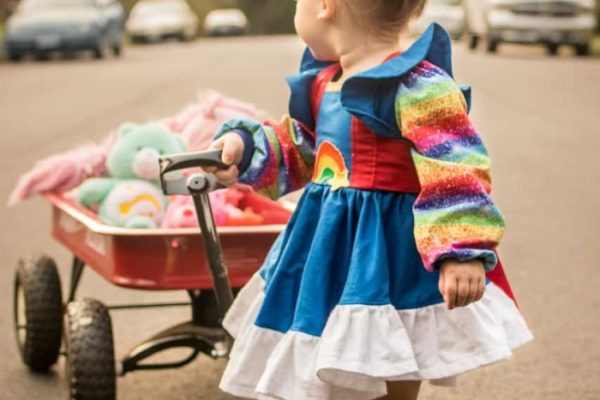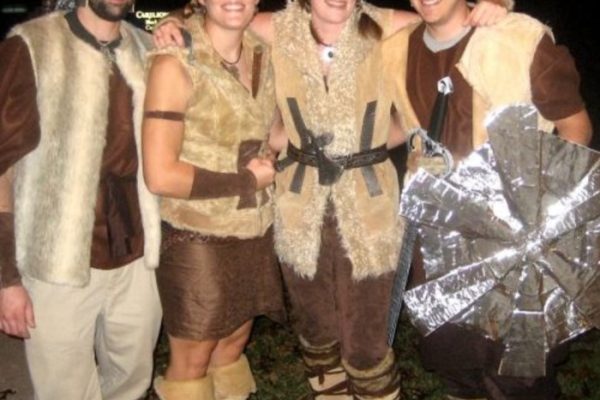Choosing the Right Materials
When creating an authentic April fool’s day raven costume, the choice of materials is crucial. High-quality materials not only improve the look of your costume but also enhance durability. Begin with choosing fabrics that provide both the desired aesthetic and needed comfort for extended wear. Consider materials that mirror a raven’s smooth, sheen plumage.
Fabric Selection
For the body of your raven costume, opt for fabrics like satin, velvet, or faux leather. These materials offer a subtle shine, resembling the natural gloss of raven feathers. Satin is lightweight and comfortable, velvet adds a rich texture, and faux leather gives a sleek, fitted appearance. For lining, use breathable cotton or mesh fabrics to maintain ventilation.
Feather Types and Textures
Incorporating feathers into your raven costume increases its realism. Use a mix of real or synthetic feathers, focusing on varying lengths and textures to mimic a raven’s layered feathers. Start with larger, stiffer feathers for the wings and tail, transitioning to softer, smaller feathers for body detailing. Pay attention to the direction and placement of feathers to achieve a natural, flowing look.
Designing Your Raven Costume
Designing a raven costume requires attention to detail and a focus on key features that embody the bird’s unique characteristics. It’s about infusing creativity with precise elements to form a realistic and engaging look.
Key Elements of a Raven Look
To capture the quintessence of a raven’s appearance, your costume should highlight specific aspects:
- Feather arrangement: Imitate the raven’s sleek body and prominent wings. Ensure the feathers flow in natural patterns.
- Color scheme: Stick to a palette of blacks and dark grays, with hints of iridescence to mimic the raven’s natural sheen.
- Beak and eyes: These are the focal points. Craft a pointed beak and use makeup or masks to darken the eyes, enhancing the bird’s piercing gaze.
Employ layering and texturing techniques discussed earlier to add depth to the feathers and create a dynamic, lifelike silhouette.
Balancing Authenticity and Comfort
While striving for a true-to-life raven costume, comfort is key. Consider these tips for a wearable creation:
- Select lightweight materials for ease of movement.
- Ensure your costume is not too tight or restrictive.
- Integrate flexible joins in the wings for unrestricted motion.
Adjust the fit and layering to suit your mobility needs without sacrificing the authentic look of the costume. Remember, a comfortable costume enhances the overall experience, making it possible to inhabit your raven persona for longer periods.

DIY Raven Costume Accessories
A raven costume’s realism shines through the accessories you create. Accessories like beaks and talons bring your raven persona to life and are essential for a complete look.
Beak Crafting Techniques
Crafting the beak is a critical step in perfecting your raven costume. Start with a base, such as lightweight foam or cardboard, which is easy to shape and manipulate. Carve the beak’s shape carefully, aiming for a pointed and pronounced profile characteristic of a raven. Cover the base with black papier-m?ché or felt for texture and color. Paint it glossy black to mimic the natural sheen. For a secure fit, attach elastic bands or straps that allow the beak to stay comfortably on your face.
Creating Realistic Talons
For talons, use sculpting clay that hardens as it dries, providing a durable base. Mold the clay into sharp, curved talon shapes and paint them black or dark gray. Once dry, attach the talons to gloves or shoe covers using strong adhesive or sew them on for a more permanent solution. Remember, while creating talons, safety comes first—ensure the edges are not sharp and the talons do not impede your walking or use of hands.
The Importance of Layering
Creating a convincing raven costume is all about the details, and one crucial element is layering. Layering your costume with different materials and feather types adds dimension and can transform a flat, lifeless outfit into a dynamic representation of a raven’s plumage. The process of layering mimics how feathers naturally overlay on a bird’s body which gives depth and richness to your costume. Think of each layer as a step closer to that authentic raven look, with each one playing a specific role in achieving the desired effect.
Using Layers to Create Depth
To create depth, start with a solid base, usually made of the darker fabrics you’ve chosen for your raven costume such as satin, velvet, or faux leather. Then, strategically place the larger feathers on areas like the wings and tail to form the primary layer. These under-feathers set the stage for more intricate detailing. Next, add medium-sized feathers for the secondary layer, blending them over the larger ones. Finally, for the top layer, apply smaller and more delicate feathers, ensuring they are arranged to mimic the natural flow and gradations seen in a raven’s coat. Through careful placement of these layers, you’ll add a three-dimensional aspect to your costume that’s both striking and true to life.
Techniques for Attaching Feathers
Attaching feathers in a secure yet natural-looking way can be challenging. For large feathers, hand-stitching or using fabric glue can give you the control you need to set them in place while allowing for natural movement. For smaller feathers and those in more detailed areas, hot glue can be precise and quick. Remember always to apply these materials to the underside of feathers to keep the joins invisible. Velcro strips are another option, especially if you want a layer that is adjustable or removable. The key is to attach feathers in the direction they would naturally grow, starting from the bottom up, ensuring each layer slightly covers the one beneath. This approach will give your raven costume a cohesive, realistic structure, excellent for captivating everyone’s attention.
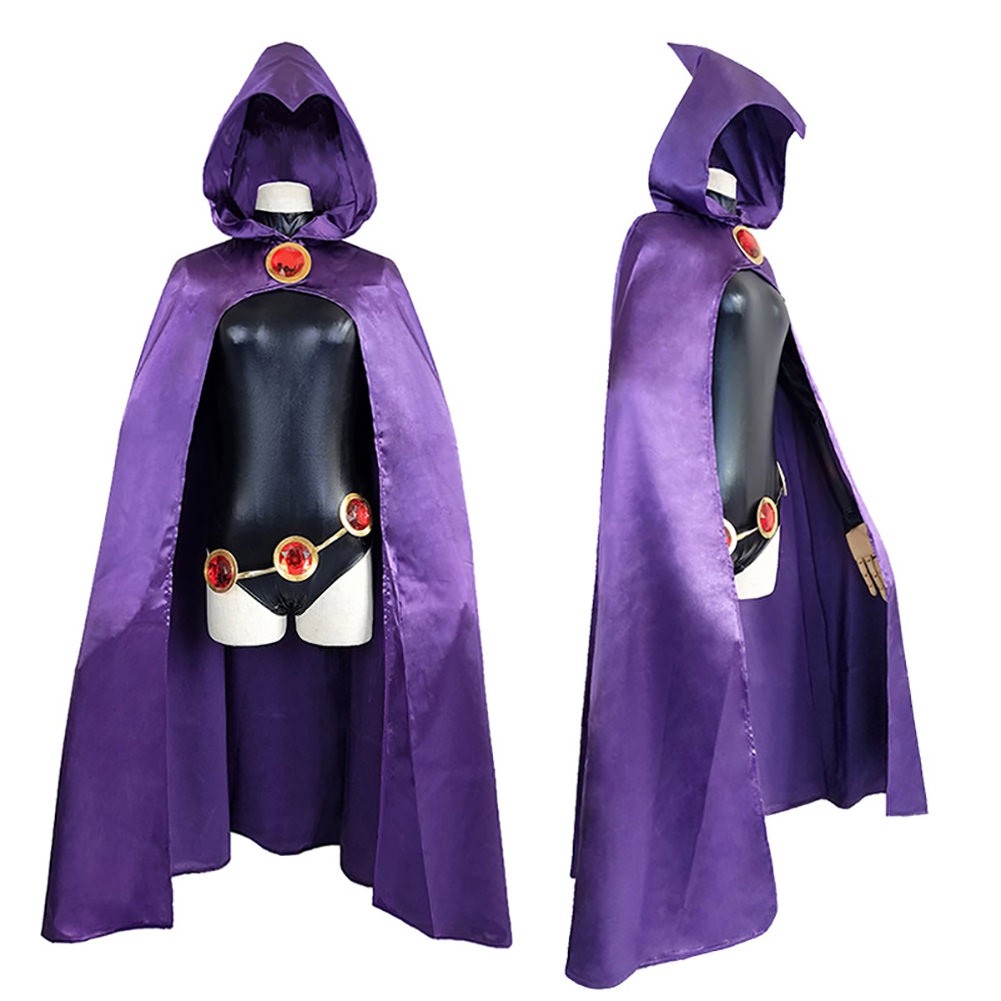
Makeup and Face Painting Ideas for Your Raven Costume
The makeup you choose breathes life into your raven costume, taking it from good to remarkable. It complements the textured layers and accessories you’ve crafted, finishing the transformation.
Eyes and Beak Makeup
Accentuate the raven’s intense gaze with dark, mysterious eye makeup. Use black eyeshadow and eyeliner to create a sharp, edged look that mirrors a raven’s keen sight. Smudge the eyeshadow around your eyelids for a smokey effect. Then design a convincing beak with makeup. Draw the outline of the beak around your nose using face paint or a makeup pencil. Fill it in with black makeup and set it with a matte finish to avoid shine, creating a stark contrast.
Feathering Effects on Skin
To extend the illusion of feathers onto your skin, use makeup to create feather-like patterns. Start around your eyes and cheeks, using a fine brush and face paint. Paint small, delicate lines that mimic feather textures. Choose shades of gray and black for a cohesive look with your raven costume. This technique blurs the line between your skin and the costume, enhancing realism. For a lasting effect, always use high-quality, skin-safe paints and set your designs with a setting spray.
Safety Tips for Costume Wear
Safety should always come first when wearing any costume. A raven costume, with its layers and accessories, is no exception. Here are some essential tips to ensure your safety while wearing your costume:
Mobility and Visibility
- Opt for materials that allow you to move freely. Your wings and other parts should not restrict your arms or legs.
- Make sure the costume fits well. Avoid long hems that could cause tripping.
- Don’t sacrifice visibility for design. Eye holes in masks or hoods should be wide enough for a full range of sight.
- Practice walking in your costume. Get used to the feel of the talons or large wings.
- Keep your hands free. Ensure you can easily remove parts of the costume if needed.
Durable Construction for Outdoor Events
- Use sturdy materials. Your costume should withstand the wear and tear of events.
- Secure all attachments. Make sure that feathers and accessories are firmly attached.
- Check weather resistance. If you’re outdoors, make sure your costume can handle a bit of rain.
- Bring repair supplies. A small kit with glue, tape, and safety pins can save the day.
- Choose comfort over complexity. Especially for long events, make sure you can wear your costume for an extended period.
By following these safety and durability guidelines, you will not only maintain the integrity of your raven costume but also ensure a comfortable and worry-free experience.

Finding Inspiration for Your Raven Costume
Inspiration is the fuel for creativity, especially when crafting a costume. Look to the natural world and the vivid culture around you to spark ideas for your raven costume.
Analyzing Images of Real Ravens
Start by examining real ravens closely. Study images or watch videos to grasp the nuances of their appearance. Observe the texture of their feathers, the curve of their beak, and the intensity of their eyes. Note the different shades within their black plumage and the way their feathers sit against their body. This research will help you recreate the subtle details that make your costume stand out.
Drawing from Pop Culture References
Pop culture is rich with raven imagery that can add an exciting twist to your costume. Think of famous ravens from movies, TV shows, or books. Shows like ‘Game of Thrones’ feature the raven as a symbol of mystery. These references can inspire elements of your costume, from the overall style to specific details. Pair the natural accuracy you’ve researched with a dose of creative flair from pop culture to make your raven costume truly unique.

